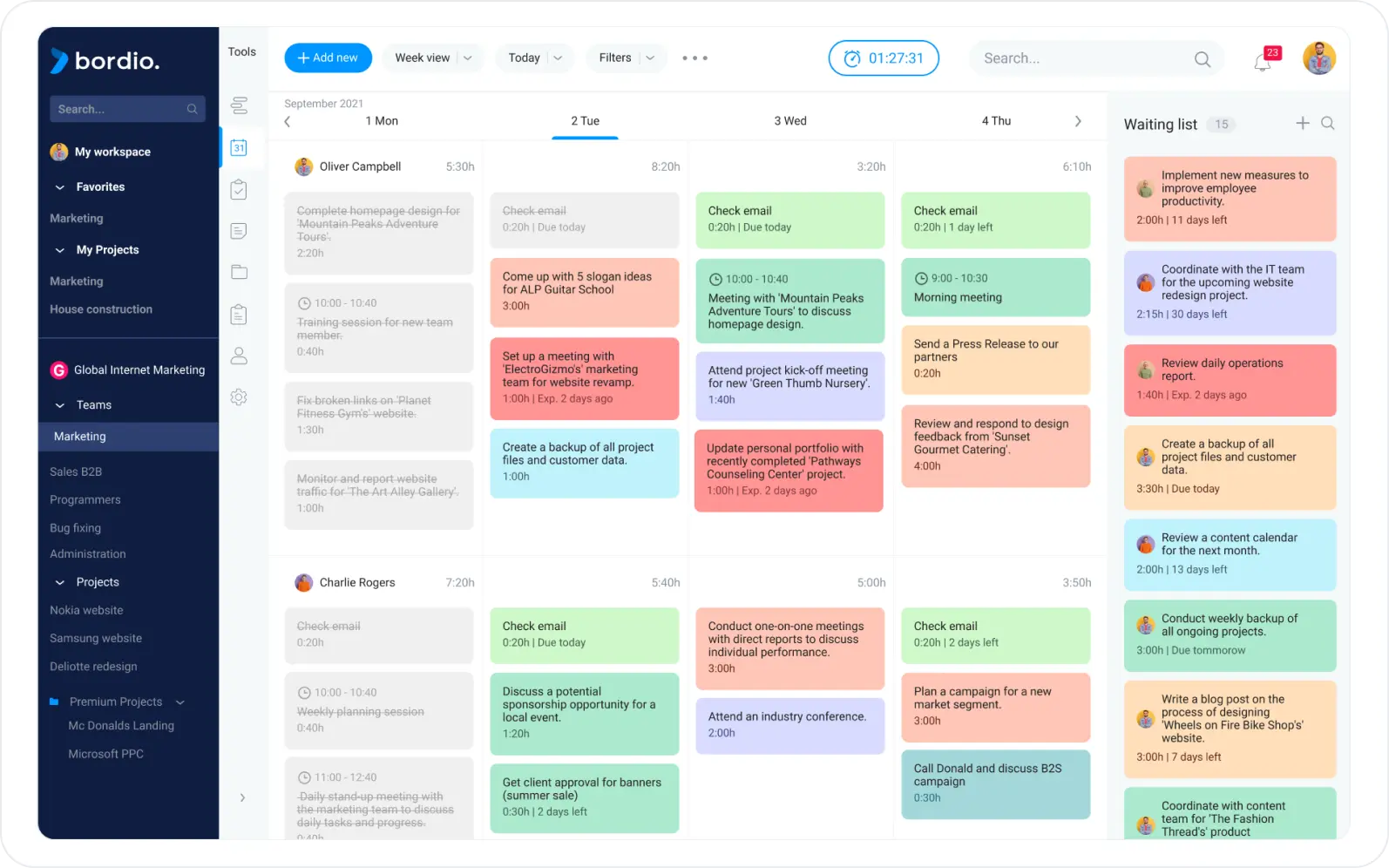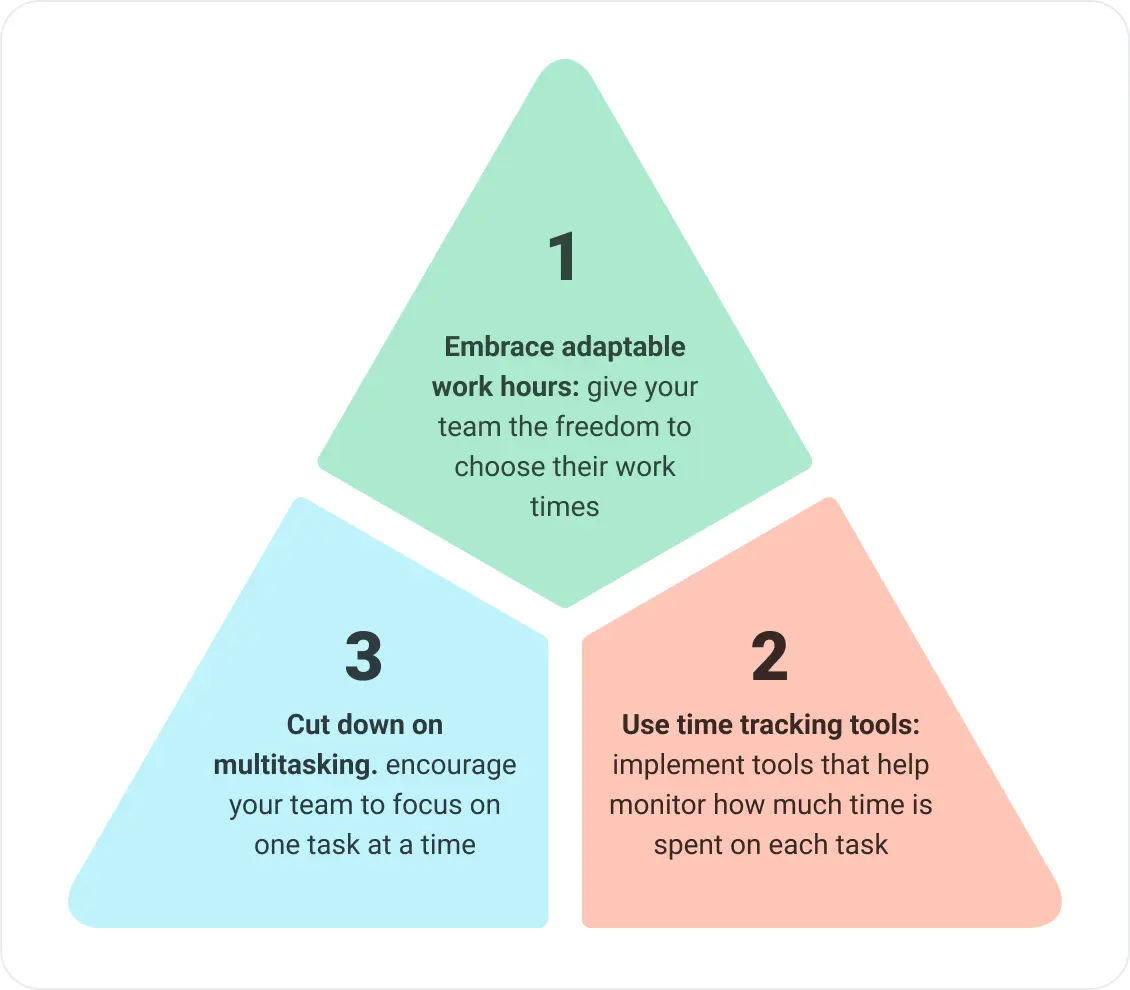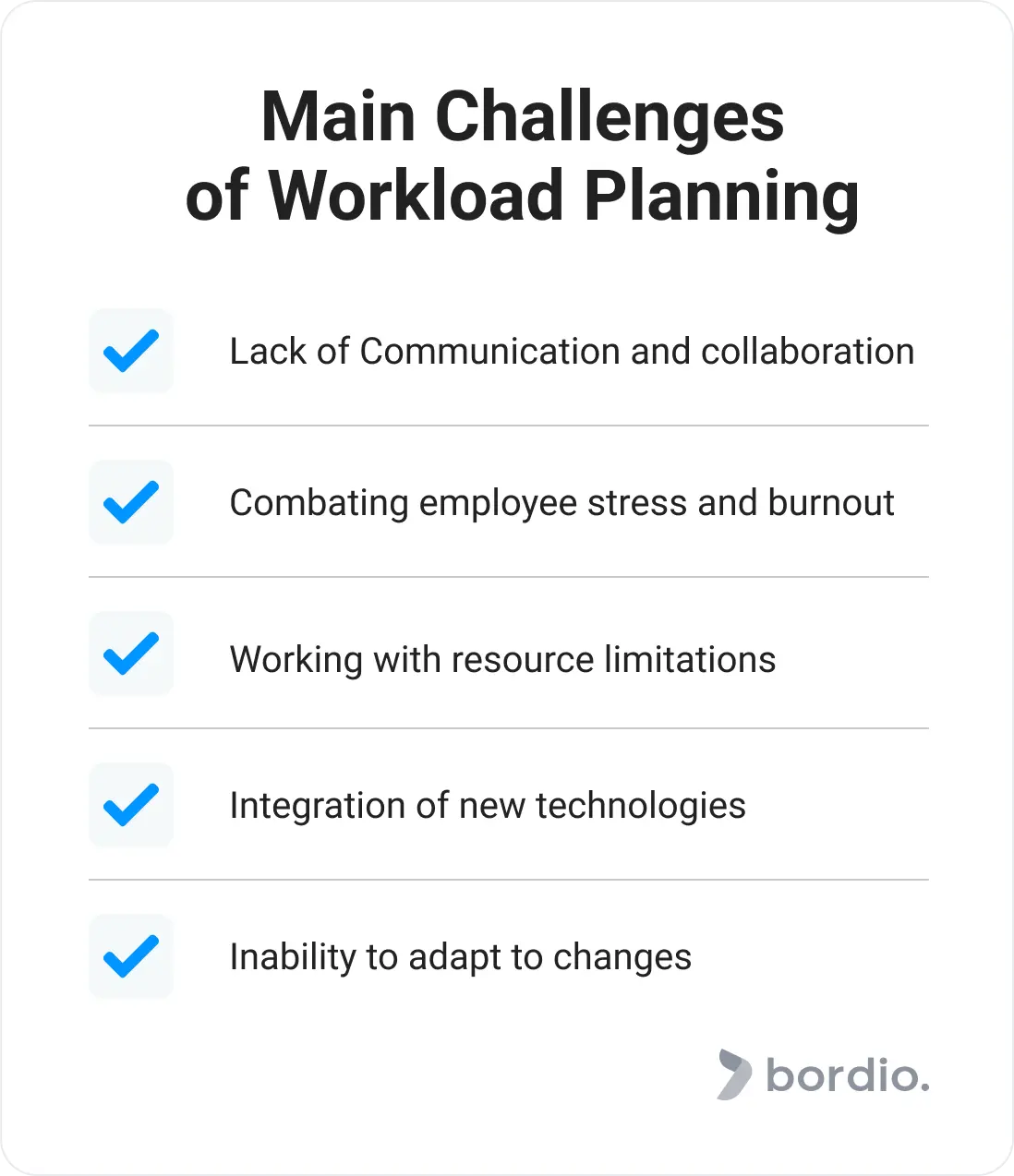No matter how many organizational tricks you’ve tried or what latest apps you’ve downloaded, there is always more to improve and manage workload management process and distribution.
Effective workload planning is critical when it comes to simply juggling different tasks due to extreme workload because it directly affects how much we get done and the quality of our results.
Effective workload planning isn’t all about giant leaps and bounds. It’s about taking doable steps, making intelligent decisions, and sticking to them consistently. In this article, we’re excited to share several simple steps to improve your workload planning strategy dramatically. These tips are practical, sustainable, and proven to ensure you and your team get things done, feel less overwhelmed, and maintain high productivity. Let’s dive in and make effective workload management and planning easier!
Effective steps for workload planning
Now, let’s dive deeper into organized efficiency with our detailed guide to effective steps to manage your workload optimally.
1. Start with a clear goal
Before getting lost in workload planning, having a clear goal is critical. What do you want to achieve? Setting a clear goal gives direction and purpose to your planning. We have already mentioned unorganized travel above. Setting out on a journey without knowing where you’re going is not quite wise. So, think of it as choosing a destination before you embark on a journey. This will help you and your team stay focused and aligned in one direction.
2. Understand your team’s capabilities
It’s essential to understand the strengths and weaknesses of each team member, as they are like tools in a toolbox. As a manager, you need to know what tools you have before starting a project. This understanding helps to allocate and assign tasks according to the skills of each team member, ensuring the efficiency and quality of their work. Without it, it is impossible to achieve a positive result!
3. Implement an effective monitoring system
Regarding effective employee and workload management strategies and planning, progress monitoring is a game changer. It’s not just about tracking tasks; it’s about creating a positive and stress-free work environment. By closely tracking high-priority and recurring tasks, teams can work more efficiently and stay on track. Here’s how you can integrate practical progress monitoring tools to improve productivity – catch a few lifehacks:
- Use interactive dashboards. Implement dashboards that display both individual and team progress. This visual presentation keeps everyone in the loop and generates healthy competition, increasing productivity.
- Use Kanban or Scrum Boards: these tools are excellent for visualizing workflows. They turn routine to-do lists into a fun game, making task management more enjoyable and efficient.
Tip: The foundation of any effective progress tracking is choosing the proper productivity and time management tools. For example, a comprehensive online calendar planner allows team members to log tasks and events, track their daily workload, and manage unplanned tasks. This approach ensures that everything from brainstorming sessions to ad hoc tasks is organized. Depending on your specific needs, you may also want to explore other workload management tools designed for weekly scheduling. The key is to find a system that integrates easily into your team’s workflow, increasing the overall efficiency of workload planning.
Bordio is an online work management tool offering automated team workload and calculations to optimize task and resource management tools. With Bordio, assigning tasks to team members and tracking their progress is easy. As a project manager:
- Keeping track of your team’s tasks and managing assignments effectively will be easy.
- The built-in calendar displays tasks and events, allowing you to quickly view the workload of each employee, conveniently calculated using the software.
- The team panel also displays all tasks delegated to every team member. It’s very convenient because it provides a quick, comprehensive view of all critical details, helping you manage your workload seamlessly.
4. Break tasks into smaller steps
The most effective strategy for handling a sizable project is to divide it into smaller, more achievable segments, similar to consuming a pizza slice by slice, instead of attempting to consume the entire pizza in one go. This method reduces the complexity and simplifies the workload of the project tasks, making them more manageable. It also helps track progress and identify potential obstacles early on.
5. Prioritize your tasks
Not all tasks are the same. Some of the prioritized tasks are more urgent or important than others. Prioritization ensures that your team works on what is most important at any given time. It’s like knowing when to put out a fire and when to water your plants.
Tip. Bordio provides a clear view of the of each team member. It displays the total time allocated to each person’s assigned tasks, giving you an instant idea of who is overworked and has room for more.
Regarding team visibility, it can be compared to a central command center: every task assigned to a team member is also visible in a single command interface. This workload management tool lets you see all vital task information simultaneously, like monitoring multiple screens in a control room, helping optimize the workload management process, and coordinating the workload distribution and project schedules in the entire team.
6. Set realistic deadlines
The key is to set achievable deadlines. It’s about striking the right balance with motivating yet realistic deadlines. Setting them too tough can cause undue stress and burnout, whereas being too relaxed with timelines might invite procrastination. Finding that perfect middle ground is key. Balance is everything!
7. Implement effective time management techniques
Time management is crucial in planning the proper workload management, too. They help divide the working day into more manageable segments, allowing focused work with necessary breaks. Also, emphasize the importance of respecting work boundaries to avoid burnout and burnout. This may mean setting clear expectations for working hours where breaks and non-working hours are normalized and regulated.
To maximize the effectiveness of workload planning through time management, consider these additional workload management strategies below:
- Embrace adaptable work hours: Give your team the freedom to choose their work times, whether the crack of dawn or the evening, whenever they feel most productive and energized.
- Use time tracking tools: Implement tools that help monitor how much time is spent on each task. This will help you identify areas for efficiency improvement.
- Cut down on multitasking. Encourage your team to focus on one task at a time to improve productivity and output quality.
Bordio is Here, too! Bordio appears as an invaluable helper. It is an exemplary time management tool for effective team workload management and planning. Bordio’s intuitive design and robust capabilities are perfect for keeping track of tasks, establishing deadlines, and managing multiple projects together in a unified location. It allows teams to work together effortlessly, arrange tasks by priority, and stay informed about the latest developments in their projects. This boosts overall productivity and streamlines the time management process effectively.
8. Encourage communication and feedback
Establish open lines of communication and encourage feedback within your team. It’s like having a sound navigation system; this ensures everyone knows where they are going and can report any obstacles. Feedback helps improve processes and quickly resolve any problems that arise.
9. Develop a culture of continuous learning
Encourage and facilitate the continuous development of skills and the acquisition and deepening of knowledge in your whole team’s capacity. This may mean setting aside time for workshops, online courses, or cross-training sessions. When informed about new methods and technologies, a team can handle tasks more efficiently and creatively.
10. Re-evaluate and adjust your goals
In a fast-paced world, in a rapidly changing work environment, it is vital to review and re-evaluate your goals and adjust them periodically. This can happen in a quarter due to various causative factors. Adapting your goals will help you keep your strategies relevant and effective.
11. Encourage proactive problem-solving
Create an environment where team members feel confident in identifying potential problems and finding solutions without constantly waiting for someone from above to give them the necessary directives and recommendations. This proactive approach can be activated by organizing regular brainstorming sessions and looking for innovative solutions.
12. Balance team autonomy and leadership
Find the perfect balance between giving team members the freedom to manage tasks and giving them the guidance and support they need. This means that you trust your team’s decisions, but at the same time, you are always open and ready for advice and help. Such a balance can increase job satisfaction, leading to higher productivity and better decision-making within a team.
13. Optimize Meetings and Communication Practices
Evaluate how meetings and communication are conducted to ensure future content and effectiveness. This could include implementing policies or approaches such as having a clear agenda for each meeting, setting a time limit, or even questioning the need for the meeting itself – could it be an email or instant message? Encourage concise and compelling communication practices and use asynchronous communication methods to accommodate different work styles and time zones. Effective communication and meeting practices can significantly reduce wasted time and leave more room for productive work.
Critical hurdles in achieving optimal workload planning
This article will cover critical aspects of effective workload management strategy and planning, a key component of team management and project success, especially for project managers. Covering critical areas such as communication, skills management, stress management, and technology integration, this overview provides cutting-edge ideas and strategies for overcoming the complexities of modern workload management.
Lack of communication and collaboration
Effective communication is critical to planning and managing your team’s workload and workload and ensuring a successful workflow. Miscommunication can lead to misunderstandings at different levels in determining and implementing responsibilities, deadlines, and tasks. Consistent, clear, and concise communication is required, especially in large teams in different and remote locations.
Combating employee stress and burnout
High workloads, tight deadlines and project schedules, and constant tension at work cause stress and significantly hamper the work process, affecting individual well-being and the entire team’s productivity. Managing and pragmatically balancing the workload so that team members can meet the challenges is a critical task.
Working with resource limitations
Often, teams face limited resources, be it time, budget, or personnel. Effectively planning your team’s workload within these constraints while achieving project goals requires careful strategy development, project planning, and sometimes creative problem-solving.
Integration of new technologies and tools
With the increasing availability of various project management software and productivity tools, choosing the right technology to help you plan your workload effectively can be difficult. Integrating these tools into existing work processes and providing appropriate training to team members to ensure their correct and effective use is complex and requires a rather careful and consistent approach.
Here are some additional difficulties in integrating new technologies and tools distinct from those mentioned in the text:
- Data Security Concerns: Ensuring new tools meet the required data security and privacy standards.
- Technical Compatibility Issues: This refers to technical challenges such as software incompatibilities or hardware limitations.
- Regular Updates and Maintenance: Managing the need for ongoing updates and maintenance of new tools can be time-consuming.
- User Interface Complexity: Addressing complexities in the user interface that can hinder easy adoption and efficient use.
- Scalability: Ensuring that the chosen tools can scale effectively with the growth of the team or project requirements.
Inability to adapt to changes
Projects are dynamic, and changes may occur unexpectedly regarding project scope, client requirements, or resource availability. A major challenge for project managers is the ability to quickly and effectively adapt workload plans in response to these changes without causing disruption or demotivation.
Final thoughts on Navigating the path to efficient workload planning
To sum up, successful workload management involves creating a dynamic, supportive work environment. This starts with setting distinct objectives and recognizing your team’s strengths. Implementing project management tools, a robust tracking system, and segmenting larger projects into smaller tasks helps maintain focus and organization.
Additionally, nurturing an environment of ongoing learning and proactive problem-solving, finding the right balance between team autonomy and leadership, and refining communication and meeting protocols are crucial to adapting to a constantly changing work landscape. Regularly revisiting and adjusting goals and promoting open communication and feedback cultivate a resilient and adaptable team ready to tackle any challenge.
Effective workload and team capacity planning is not merely about task management. It’s about building a work culture that empowers each team member to excel, elevating overall team performance and well-being. These steps enhance workload management and capacity planning; they foster a more productive and positive work environment.










